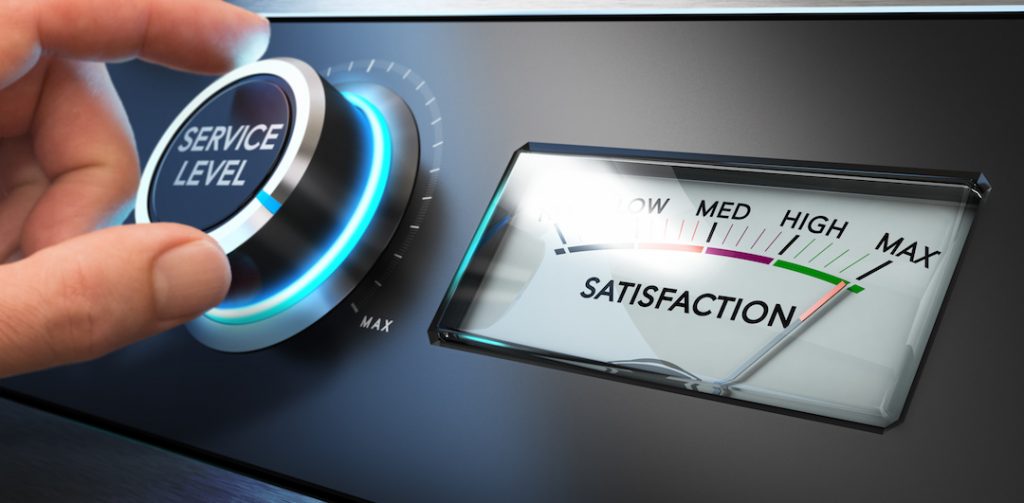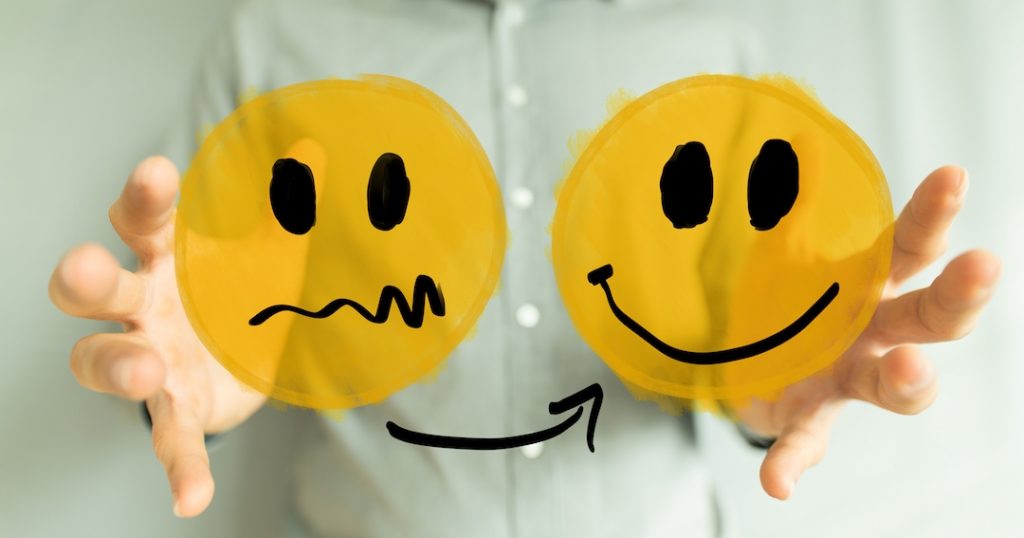 You can’t go to a supermarket, hardware store, movie, or even buy an airplane ticket without being exposed to some kind of a brand loyalty program. Whether it’s supersaver, club membership, or travel miles, they all think they can keep you loyal with credits and freebees you can only get by continuing to use their goods and services.
You can’t go to a supermarket, hardware store, movie, or even buy an airplane ticket without being exposed to some kind of a brand loyalty program. Whether it’s supersaver, club membership, or travel miles, they all think they can keep you loyal with credits and freebees you can only get by continuing to use their goods and services.
But ultimately, your brand earns the loyalty of your customers not with gimmicks and giveaways, but with consistent value and excellent customer service.
If Merriam-Webster can define loyal as “unswerving in allegiance…” and “(being) faithful to a …product,” then the loyal definition in consumer-packaged goods (CPG) brands must mean your customers are faithful to your brand. They buy your brand over and over again. But no matter how you define loyal, you want your customers to take ownership of your brand. You want them to say, “That brand is ‘my’ brand!”
In fact, what you really want is brand advocates who take brand loyalty to a whole new level by actively recommending your brand to their friends, family, and associates. You already know that a referral from a friend is far more powerful than any form of advertising.
But it’s going to take a lot more than rewards programs, gimmicks, and freebees to turn even your loyal customers into brand advocates. It’s going to take consistent value, honoring your brand promise, a customer experience that continues to exceed their expectations, and stellar customer service.
It’s also going to take a deep respect for some of the more subtle realities of consumer brands. When customers say, “That’s my brand!” they mean it! You want them to take ownership, but ‘ownership” is a double-edged sword. In their way of thinking, they “own” your brand. You can’t expect them to take ownership to the degree that they are recommending your brand and put their own personal reputation on the line with their friends, and not expect them to become outspoken critics and warn those same friends when they perceive your value or service taking a dive. Their personal reputation is on the line. You simply can’t have it both ways.
Even though you created the brand, after a few short years, it’s no longer “owned” by you, it’s “owned” by your customers. Your brand promise is more about their expectations than about your commercial claims. So, turning customers into loyal customers and loyal customers into advocates doesn’t come without respect for the implications of what you are trying to accomplish. Here are some guidelines that worked for us when building the Barefoot Wine brand, and they can work for you:
1. Respect Your Customer
When your customer tries out your brand for the first time, they are under some degree of anxiety. Typically, their “old” brand let them down and now they have to shop for a replacement. Contrary to popular belief, shopping is very stressful. You don’t know what you are going to get. If it doesn’t live up to your expectations, you will have to try yet another brand possibly with the same outcome. So, on the one hand, shopping for a new brand is risky and full of uncertainty for your new buyer, but on the other, you have a singular opportunity show your new brand shoppers that they made the right choice with your brand.
Also consider that when they are shopping for that “new” brand, they are more interested in the commodity within that particular branded package rather than the brand name. So be considerate by making the commodity big, bold, and easy to recognize on your packaging. Along with the name of the commodity, a picture of what they are buying is recommended.
Be sure to put as many quality queues, accolades, and third-party endorsements on your label and packaging as possible. Put the customers at ease. Show them they are making the right decision when choosing your brand for the first time. Remember, they are trusting you blindly and don’t know what to expect. Lastly, give them some recourse with a guarantee, a phone number, and a website that makes them confident that you stand behind your brand.
2. Provide Excellent Service
Your customer will judge you more when they have a problem with your product or service than when they don’t. How was it handled? Did they get treated “right”? Were they thanked for their call? Do your people in customer service provide “complaint resolution” or do they practice “customer intel”?

Do your people see their job as an opportunity to find out more about the customer? Like where and when they bought your brand, and how often they buy it? What did they pay? Was it in stock on a regular basis? How long have they been buying your brand? What was their experience with it and was this the first time it didn’t live up to their expectations?
Are your people friendly, accessible, and helpful? Or do you make callers have to wait, go through a complicated decision tree, get put on hold or dropped off? They are already disappointed with their most recent experience with your brand. Why exacerbate that dissatisfaction with scripted dialogue and impersonal communication? Showing empathy will often diffuse the situation and open the door for the best way forward.
Excellent customer service during a disappointing customer experience will make a lasting impression and reinforce customer loyalty. “This is a great company,” they’ll say. “They treated me right!”
3. Create a 2-Division Company
It’s easy for enterprise companies, especially, to fall into the pyramid trap where management is top down with a hierarchy of status and turf battles between the silos. They like to say, “We put the customer on top.” But how can you put the customer on top when you put Sales and Customer Service on the bottom? You can’t.
If you want loyal customers, start in your own backyard. Reorganize into a two-division company: Sales, and Sales Support. Sales includes Sales and Customer Service. Sales Support includes everyone else in the company – everybody! That includes marketing, production, R&D, Legal, HR, the CEO, the VP and even the “P”. They all should support sales. It’s how they get paid. It’s why they have a job.
So that puts the customer truly at the top of the organization, with the folks who communicate daily with the customer directly under them, and the people who provide support directly under them. This is not to say you have to physically reorganize your company, but it is to say you need formal lines of communication that enable customers’ comments, complaints, and suggestions to get directly to marketing, production, and R&D. This is the critical daily feedback that will keep your products current and relevant.
4. Evolution, not Revolution
Nothing disrupts customer loyalty like changes to the quality, packaging, product, label, or marketing. Respect the fact that your customer has gotten comfortable with your brand, the way it looks, feels, and performs. They know what to expect. They know what it looks like. They know where to find it.
Now, all of a sudden, your new 6-sigma marketing team, whom you paid a ransom for, thinks it’s time for a change. Maybe they want to update, modernize or give your brand a “new look”. Maybe your accounting people have figured out just how much more you could make if you just cheapened the product slightly. They do the math which is based on sales remaining the same, or expanding, to show you the added profits. Or maybe your production people have shown you how much you could save if you simplified, standardized, or in other ways corporatized the label or the package.
Wait! All those suggestions are based on the idea that sales will remain the same or grow. All those suggestions are based on the idea that you own the brand and can do whatever you want with the brand. Wrong on both counts. Any shock to the system can result in a big hit to sales. Customers notice! They notice any quality difference. They notice any package change. They notice any loss of individuality.
Make any and all changes gradually. Use evolution, not revolution! Don’t give your customer any reason to question the quality of your brand. Don’t make it harder for them to find. It’s hard enough already to pick your brand out of the “pizza” of brands being offered in the marketplace. And don’t have the hubris of thinking you can dictate changes to the brand. You are the brand steward, not the owner. Like they say, “If it ain’t broke, don’t fix it!”
5. Excellent Distribution Management
Probably the most overlooked factor in brand loyalty is accessibility. Is your brand readily available? Can your customer buy it when and where they want? Basically, is it still in stock in all the places it’s been sold into? You really can’t know this without sales representative – on your payroll! – in every market you think your brand is for sale.
Sure, you sold it in. You may have even told folks that they could get your product in those stores. But have you checked it out lately? Nobody has an interest in keeping your brand in stock like you do. There is so much competition for space that brands regularly are out of stock and many never get reordered. In the store, the retail buyers might say, “Your brand just isn’t selling any more.”
When in fact, what’s happened, is your brand was mispriced, misdelivered, never got out of the back room, had the potato chips’ display in front of it, or had the wrong UPC codes so you never got credit for the sales. So, the manager didn’t reorder. But, because you didn’t have a representative who was charged with maintaining inventory and keeping your brand in stock, it was out of stock and you didn’t know it!
The worst customer experience in the world is when your loyal customer goes to their favorite store to buy your brand and it’s out of stock. Do they complain? No! Do they buy your competition? Yes! Do you risk losing your loyal customer? You bet! Now they’re saying, “Oh, that brand is hard to get, undependable, and unreliable.” Sure, it’s the retailer’s fault. Sure, your distributer should have noticed. But your customer will always blame your brand.
This is why you need excellent distribution management to maintain, grow, and promote your brand at retail. When you are a CPG brand you are not in a “B2B” business, even if you sell to a distributor. You are in a “B2B2B2C” business. You are responsible for your brand all the way from your warehouse to your consumer’s house!
6. Stand for More Than Your Products
What does your brand stand for beyond price, quality, and value? What does it stand for beyond the mercantile features and benefits you offer? Is there some cause your brand supports that provides a greater good for your customers and the society in general?
These days consumers know they are voting with their purchases. The choice they make to be loyal to a brand is much deeper than ingredients, quantities, or even medals. It is a statement about them. Your customers want to feel good about making the world a better place through their purchases.
Consumers want transparency like never before. They want to know where the products contained in your brand come from. What is your brand’s impact on the health and welfare of the planet? How about the way you treat your people? What about your carbon footprint? What about your sourcing and trade practices?
Consumers want to know that a part of their purchase supports health, education, the environment, or the arts. They want to know what your brand does that makes them proud to buy it, recommend it, and remain loyal.
With CPG brands, the more local the cause you support, the better. Your brand is being sold in physical stores in physical neighborhoods. Those neighborhoods have causes close to their hearts. Your support for a cause near and dear can give them the reason they need to choose your brand when they can choose any brand.
7. Turn Your Critics into Advocates
Only a very small fraction of your consumers will actually take the time to complain. The rest will vote with their feet – and their pocketbook. They will just stop buying your brand and stop recommending it. Worse, many will publicly condemn your brand. Why? It’s simply too much trouble to pick up the phone, and make the toll-free call, wait to get someone, wait on hold, get shunted around, and finally have to talk to some impersonal agent working from a script in a foreign country, all the while knowing that their complaint will go no further than the representative they talked to. It’s a whole lot easier to just buy another brand!
 This is why it’s critical if you want to attract and keep loyal customers, that you treat complaining customer like gold! Here’s what you know when they call. They took the time to call and complain precisely because they were loyal! It’s “their” brand and getting it right is important to them. They don’t want to go through the risky process of finding a new brand. They want to be validated about their brand choice. They believe their complaint will improve your brand. They also didn’t walk away. They sacrificed their precious time to call you about their dissatisfaction.
This is why it’s critical if you want to attract and keep loyal customers, that you treat complaining customer like gold! Here’s what you know when they call. They took the time to call and complain precisely because they were loyal! It’s “their” brand and getting it right is important to them. They don’t want to go through the risky process of finding a new brand. They want to be validated about their brand choice. They believe their complaint will improve your brand. They also didn’t walk away. They sacrificed their precious time to call you about their dissatisfaction.
Now, what is the attitude of your customer service department? If it’s complaint resolution, their goal is to shut the caller up. But if their goal is to create and maintain customer loyalty, they have several opportunities to do so. The customer on the phone is already vocal about your brand. They will likely remain vocal to friends and family after the call. If they are treated with the respect they deserve, they can become advocates for your brand. Instead of, “No one has ever complained about that before!” your representative might say, “Please give us a chance to prove to you that we can exceed your expectations.”
If your customer service people just refund the callers’ money to “resolve” the complaint, the complaining customer has no reason to try your brand again. Their complaint was “resolved.” They got their money back. But their last experience with your brand was less than positive. So, it’s not about the money. It’s about creating brand advocates from complaining customers.
The road to customer loyalty is multifaceted. It’s not just having the best customer loyalty program. Most of those programs are designed to give your customers a financial consideration for remaining loyal. Without a comprehensive approach like the ones we’ve outlined here, you can easily get into an expensive customer loyalty program competition.
Why get knocked off by a competitor who offers more miles, more credits, more rebates, or more free goods? Don’t you want your customer to choose your brand and advocate it for reasons that have to do with your brand itself? Pocketbook loyalty is fickle. True loyalty comes from the heart! So, have a heart for your customers, and they will show you theirs.

